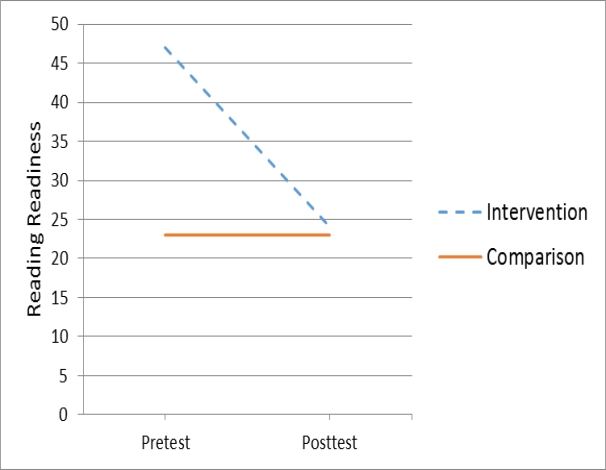Multiple Choice
Narrative 10-2 -Daycare Center - Part II
Ken studies literacy and is particularly concerned about children who lag in reading readiness.He has developed a reading readiness program that can easily be implemented by day care providers in group settings,and has selected two day cares in demographically similar neighborhoods.Ken begins by giving a reading readiness to all of the three- and four-year-olds in both of the day cares.He then implements his intervention at one daycare but not the other,and after the intervention is complete,he administers the reading readiness test again to both groups of children.
Figure TB 10-12

-Ken's results are shown in the accompanying figure.What conclusion is most strongly supported by these results?
A) The intervention had no effect.
B) The intervention improved reading readiness.
C) Selection effects prevent any conclusions.
D) Regression effects prevent any conclusions.
Correct Answer:

Verified
Correct Answer:
Verified
Q3: Figure TB 10-3<br> <span class="ql-formula"
Q37: Figure TB 10-2<br> <span class="ql-formula"
Q40: A two-group design in two phases defined
Q41: From a methodological point of view,inferences drawn
Q42: How does the switching-replications design enhance generalizability?
Q43: Research designs that have several of the
Q44: Any factor other than the program that
Q48: The fundamental threat to internal validity in
Q49: Narrative 10-1 -Daycare Center - Part I<br>Ken
Q50: The branch of mathematics dealing with the